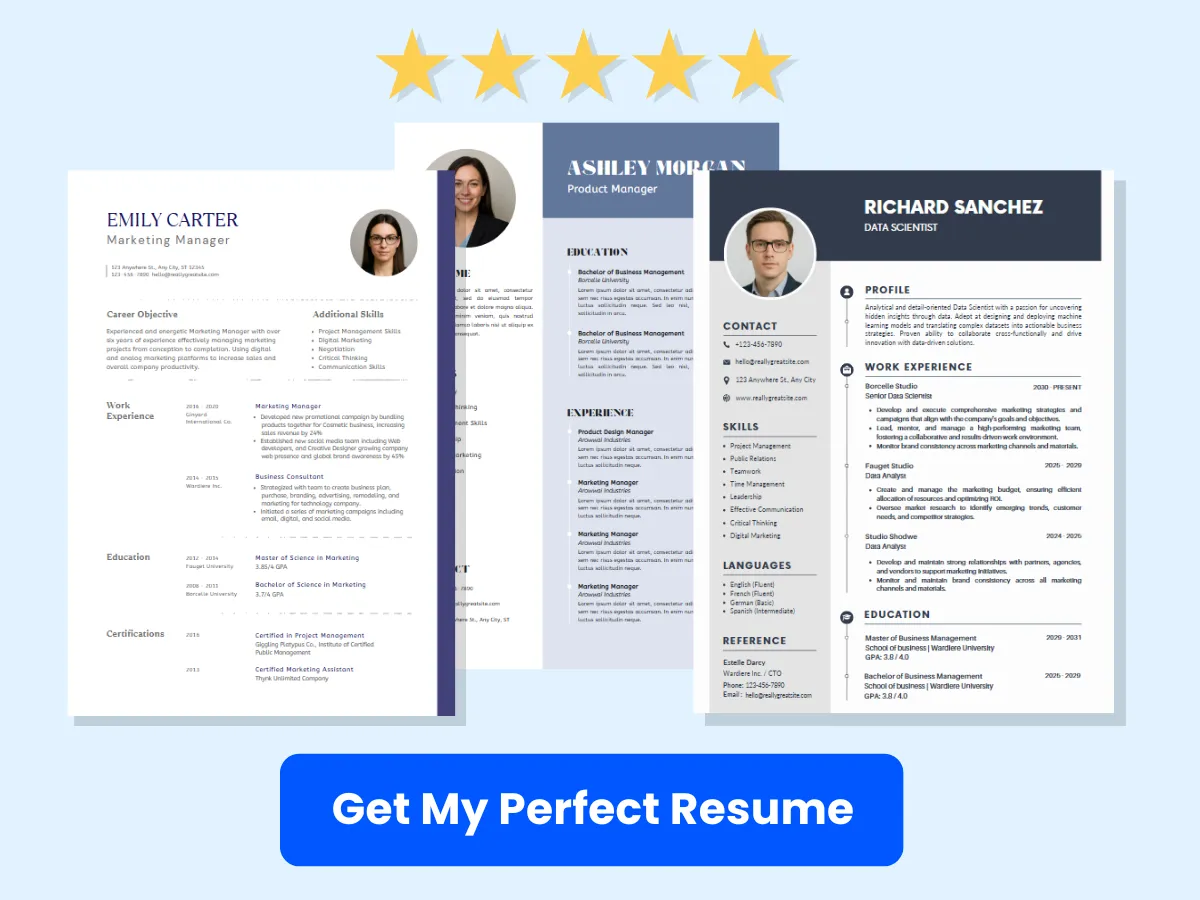Finding the right talent can feel like searching for a needle in a haystack. Enter Employee Referral Programs (ERPs)—a powerful recruitment strategy that leverages the networks of your existing employees to attract top-notch candidates. By tapping into the personal connections of your workforce, ERPs not only streamline the hiring process but also enhance the quality of new hires, leading to improved retention rates and a more cohesive company culture.
The importance of Employee Referral Programs cannot be overstated. As organizations strive to build diverse and skilled teams, ERPs offer a cost-effective solution that often results in faster hiring times and candidates who are a better fit for the company’s values and goals. In an era where employee engagement and satisfaction are paramount, fostering a culture that encourages referrals can also boost morale and strengthen team dynamics.
In this article, we will delve into the myriad benefits of implementing an Employee Referral Program, from increased employee engagement to reduced recruitment costs. We will also provide a comprehensive guide on how to effectively set up and manage an ERP, ensuring that your organization can harness the full potential of this invaluable resource. Whether you’re a seasoned HR professional or a business leader looking to enhance your recruitment strategy, this article will equip you with the insights and tools needed to create a successful Employee Referral Program.
Exploring Employee Referral Programs
Definition and Concept
Employee referral programs (ERPs) are structured initiatives within organizations that encourage current employees to recommend potential candidates for job openings. These programs leverage the existing workforce’s networks, allowing companies to tap into a pool of talent that may not be accessible through traditional recruitment methods. The core concept behind ERPs is simple: employees are incentivized to refer qualified candidates, often receiving rewards or bonuses if their referrals are hired and remain with the company for a specified period.
ERPs are built on the premise that employees understand the company culture, values, and job requirements better than external recruiters. By involving employees in the hiring process, organizations can enhance the quality of hires, reduce time-to-fill positions, and improve employee engagement. Furthermore, candidates referred by current employees often have a higher retention rate, as they come with a pre-existing understanding of the company environment.


Historical Background
The concept of employee referrals is not new; it has been a part of recruitment strategies for decades. Historically, companies relied heavily on word-of-mouth and personal networks to fill positions. Before the advent of formal recruitment agencies and online job boards, referrals were one of the primary means of sourcing talent. As businesses grew and the job market became more competitive, the need for structured referral programs emerged.
In the late 20th century, as organizations began to recognize the value of employee referrals, many started formalizing these processes. The rise of technology and the internet in the 1990s further transformed ERPs, allowing companies to track referrals more efficiently and manage the associated rewards. Today, with the proliferation of social media and professional networking platforms like LinkedIn, employee referral programs have evolved into sophisticated systems that can significantly enhance recruitment efforts.
Types of Employee Referral Programs
Employee referral programs can vary widely in structure and implementation. Understanding the different types can help organizations choose the best approach for their specific needs. Here are some common types of employee referral programs:
1. Traditional Referral Programs
Traditional referral programs are straightforward and typically involve a simple process where employees submit the names of potential candidates. If the referred candidate is hired and meets certain criteria (such as staying with the company for a specified period), the referring employee receives a monetary bonus or other incentives. This type of program is easy to implement and can be effective in generating quality referrals.
2. Tiered Referral Programs
Tiered referral programs offer varying levels of rewards based on the position of the referred candidate or the number of successful referrals made by an employee. For example, an employee might receive a higher bonus for referring a senior-level position compared to an entry-level role. This structure encourages employees to refer candidates for more challenging positions and can motivate them to participate more actively in the program.
3. Referral Contests
Referral contests are a dynamic way to engage employees in the referral process. Organizations can run periodic contests where employees compete to refer the most candidates within a specific timeframe. Winners can receive substantial prizes, such as cash bonuses, gift cards, or even vacations. This approach not only incentivizes referrals but also fosters a sense of camaraderie and friendly competition among employees.


4. Social Media Referral Programs
With the rise of social media, many companies have started to incorporate these platforms into their referral programs. Employees can share job openings on their social media profiles, expanding the reach of the job postings. Some organizations even provide employees with pre-written posts or graphics to make sharing easier. This type of program can significantly increase the visibility of job openings and attract a broader audience.
5. Referral Networks
Referral networks take the concept of employee referrals a step further by encouraging employees to tap into their professional networks outside the organization. This can include former colleagues, industry contacts, or even friends. Companies may provide tools or platforms that facilitate these connections, allowing employees to easily share job openings with their networks. This approach can lead to high-quality referrals from individuals who are already familiar with the industry and the company’s reputation.
6. Alumni Referral Programs
Alumni referral programs focus on former employees who have left the organization. These individuals can be valuable sources of referrals, as they understand the company culture and may have connections to other qualified candidates. Organizations can maintain relationships with alumni through newsletters, social media groups, or alumni events, encouraging them to refer potential candidates for open positions.
Benefits of Employee Referral Programs
Implementing an effective employee referral program can yield numerous benefits for organizations. Here are some of the key advantages:
1. Improved Quality of Hires
Referrals often lead to higher-quality hires, as employees are likely to recommend candidates who they believe will fit well within the company culture and meet the job requirements. This can result in better job performance and a more cohesive work environment.


2. Reduced Time-to-Fill Positions
Employee referrals can significantly shorten the hiring process. Since referred candidates are often pre-vetted by current employees, they may require less screening and interviewing. This efficiency can lead to faster hiring and reduced costs associated with prolonged vacancies.
3. Higher Retention Rates
Candidates hired through referrals tend to have higher retention rates compared to those sourced through traditional methods. This is often attributed to the fact that referred candidates have a clearer understanding of the company culture and expectations, leading to better job satisfaction and engagement.
4. Enhanced Employee Engagement
Involving employees in the recruitment process can boost their engagement and morale. When employees feel that their opinions are valued and that they play a role in shaping the workforce, they are more likely to be invested in the company’s success.
5. Cost-Effectiveness
Employee referral programs can be more cost-effective than traditional recruitment methods. While there may be upfront costs associated with rewards and incentives, the overall savings from reduced hiring costs and lower turnover rates can outweigh these expenses.
6. Stronger Company Culture
When employees refer candidates, they are essentially endorsing the company and its values. This can help strengthen the company culture, as new hires are more likely to align with the organization’s mission and vision, fostering a positive work environment.
Implementing an Employee Referral Program
To successfully implement an employee referral program, organizations should consider the following steps:
1. Define Clear Objectives
Before launching an ERP, it is essential to define clear objectives. Determine what the organization hopes to achieve through the program, such as reducing time-to-fill positions, improving the quality of hires, or increasing employee engagement.


2. Design the Program Structure
Choose the type of referral program that aligns with the organization’s goals and culture. Consider factors such as the reward structure, eligibility criteria, and the process for submitting referrals. Ensure that the program is easy to understand and accessible to all employees.
3. Communicate the Program
Effective communication is crucial for the success of an ERP. Clearly communicate the program details to all employees, including how it works, the rewards available, and the importance of their participation. Utilize various channels, such as company meetings, emails, and internal newsletters, to spread the word.
4. Provide Training and Resources
Equip employees with the tools and resources they need to make successful referrals. This may include training sessions on how to identify potential candidates, access to job descriptions, and guidance on how to approach their networks.
5. Monitor and Evaluate the Program
Regularly monitor the program’s performance and gather feedback from employees. Analyze metrics such as the number of referrals, the quality of hires, and the overall impact on recruitment efforts. Use this data to make necessary adjustments and improvements to the program.
6. Celebrate Successes
Recognize and celebrate the contributions of employees who make successful referrals. This can be done through public acknowledgments, awards, or additional incentives. Celebrating successes not only motivates employees to participate but also reinforces the value of the program within the organization.
By understanding the definition, historical context, types, and benefits of employee referral programs, organizations can effectively implement these initiatives to enhance their recruitment strategies and build a stronger workforce.


Benefits of Employee Referral Programs
Employee referral programs (ERPs) have gained significant traction in the recruitment landscape, and for good reason. These programs leverage the existing workforce to identify and attract top talent, creating a win-win situation for both employers and employees. Below, we delve into the myriad benefits of implementing an employee referral program, exploring how they enhance the hiring process and contribute to a more robust organizational culture.
Enhanced Quality of Hires
One of the most compelling advantages of employee referral programs is the enhanced quality of hires. Employees tend to refer candidates who they believe will fit well within the company culture and possess the necessary skills for the job. This is largely because employees understand the company’s values, work environment, and the specific requirements of the roles they are filling.
For instance, a study by the Jobvite Recruiter Nation Survey found that referred candidates are 55% more likely to be hired than candidates sourced through job boards. This is attributed to the fact that employees are likely to refer individuals they know personally, which often leads to a more thorough vetting process before the candidate even reaches the interview stage.
Cost-Effectiveness
Cost is a critical factor in any recruitment strategy, and employee referral programs can significantly reduce hiring costs. Traditional recruitment methods, such as job postings and recruitment agency fees, can be expensive. In contrast, ERPs typically require minimal investment, primarily involving referral bonuses or incentives for employees who successfully refer candidates.
According to a report by the Society for Human Resource Management (SHRM), companies that utilize employee referrals can save up to 50% on hiring costs compared to traditional methods. This cost-effectiveness is particularly beneficial for small to medium-sized enterprises (SMEs) that may have limited recruitment budgets.
Faster Hiring Process
Time is of the essence in recruitment, and employee referral programs can significantly expedite the hiring process. Referred candidates often move through the hiring pipeline more quickly than those sourced through other channels. This is due to several factors:


- Pre-vetting: Employees typically refer candidates they know well, which means that the initial vetting process is often more thorough.
- Familiarity: Hiring managers may feel more confident interviewing referred candidates, knowing they come with a personal endorsement.
- Streamlined Communication: The referral process often facilitates quicker communication between the candidate and the hiring team.
As a result, companies can fill open positions faster, reducing the time-to-hire metric and allowing teams to operate at full capacity sooner.
Improved Employee Retention
Retention is a critical concern for organizations, and employee referral programs can play a significant role in improving retention rates. Referred employees tend to stay longer with the company compared to those hired through other channels. This can be attributed to several factors:
- Better Cultural Fit: Referred candidates are often more aligned with the company culture, leading to higher job satisfaction.
- Stronger Relationships: When employees refer friends or acquaintances, it fosters a sense of community and support within the workplace.
- Increased Engagement: Referred employees are often more engaged and motivated, as they have a personal connection to the organization through their referrer.
According to a study by Hiretual, referred employees have a 25% higher retention rate after two years compared to non-referred hires. This not only saves costs associated with turnover but also contributes to a more stable and experienced workforce.
Strengthened Company Culture
Company culture is a vital component of organizational success, and employee referral programs can help strengthen this aspect. When employees refer candidates, they are essentially endorsing the company and its values. This creates a sense of ownership and pride among employees, as they play an active role in shaping the workforce.
Moreover, referred candidates often come with a pre-existing understanding of the company culture, which can lead to smoother onboarding and integration. For example, if an employee refers a friend who shares similar values and work ethics, the new hire is more likely to adapt quickly and contribute positively to the team dynamics.
Increased Employee Engagement and Morale
Employee engagement is crucial for productivity and job satisfaction. Implementing an employee referral program can significantly boost morale and engagement levels within the organization. When employees are encouraged to participate in the hiring process, they feel valued and recognized for their contributions.


Additionally, referral bonuses or incentives can serve as a motivational tool, encouraging employees to actively participate in the recruitment process. This not only fosters a sense of teamwork but also creates a culture of collaboration where employees feel invested in the success of their colleagues and the organization as a whole.
For instance, a tech company might implement a referral program that rewards employees with a bonus for every successful hire they refer. This not only incentivizes employees to refer high-quality candidates but also creates a sense of camaraderie as they work together to build a strong team.
Broader Reach and Network Utilization
Employee referral programs allow organizations to tap into the extensive networks of their employees. Each employee has a unique network of contacts, and leveraging these connections can significantly broaden the reach of recruitment efforts. This is particularly beneficial in niche industries or competitive job markets where finding qualified candidates can be challenging.
By encouraging employees to refer candidates from their networks, companies can access a diverse pool of talent that may not be reachable through traditional recruitment channels. This can lead to a more varied workforce, bringing in different perspectives and ideas that can drive innovation and creativity within the organization.
For example, a marketing firm might encourage its employees to refer candidates from their previous workplaces or industry events. This not only increases the chances of finding qualified candidates but also enhances the company’s reputation as a desirable place to work, as employees share their positive experiences with their networks.
The benefits of employee referral programs are manifold, ranging from improved quality of hires and cost-effectiveness to enhanced employee engagement and a stronger company culture. By implementing a well-structured ERP, organizations can not only streamline their recruitment processes but also foster a more cohesive and motivated workforce.
Key Components of a Successful Employee Referral Program
Clear Objectives and Goals
Establishing clear objectives and goals is the cornerstone of any successful employee referral program. Organizations must define what they aim to achieve through the program, whether it’s increasing the quality of hires, reducing time-to-fill positions, or enhancing employee engagement. For instance, a company might set a goal to fill 30% of its open positions through referrals within the next year. This clarity not only guides the program’s design but also helps in measuring its success.
To set effective objectives, consider the following:
- Alignment with Business Goals: Ensure that the referral program aligns with the broader business objectives. For example, if a company is expanding into new markets, the referral program should focus on attracting candidates with relevant experience in those areas.
- Measurable Outcomes: Define specific metrics to evaluate the program’s success. This could include the number of referrals received, the conversion rate of referrals to hires, and the performance of referred employees compared to non-referred employees.
- Timeframes: Set realistic timelines for achieving these goals. This helps in maintaining momentum and allows for timely adjustments to the program as needed.
Defined Roles and Responsibilities
For an employee referral program to function effectively, it is essential to define roles and responsibilities clearly. This ensures that everyone involved understands their part in the process, from the employees making referrals to the HR team managing the program.
Key roles may include:
- Employees: They are the primary source of referrals and should be encouraged to participate actively. Providing them with training on how to identify suitable candidates can enhance the quality of referrals.
- HR Team: Responsible for overseeing the program, the HR team should manage the logistics, track referrals, and ensure that the process is smooth and efficient.
- Hiring Managers: They play a crucial role in providing feedback on the quality of referrals and should be involved in the program to ensure alignment with departmental needs.
- Leadership: Senior management should endorse the program, emphasizing its importance and encouraging participation across the organization.
Transparent Referral Process
A transparent referral process is vital for building trust and encouraging participation among employees. When employees understand how the referral process works, they are more likely to engage with it. Here are some key elements to consider:
- Step-by-Step Guidelines: Provide clear instructions on how to refer candidates. This could include details on submitting referrals, what information is needed, and how to follow up on the status of their referrals.
- Feedback Mechanism: Implement a system where employees can receive updates on their referrals. This could be through automated emails or a dedicated portal where they can track the progress of their referrals.
- Clear Criteria: Define the criteria for what constitutes a successful referral. This includes the qualifications and experience required for the positions being filled, ensuring that employees are referring candidates who meet the necessary standards.
Attractive Incentives and Rewards
To motivate employees to participate in the referral program, it is crucial to offer attractive incentives and rewards. These can take various forms, depending on the company culture and budget. Here are some effective strategies:
- Monetary Rewards: Cash bonuses are a popular choice for many organizations. For example, a company might offer $1,000 for each successful referral that leads to a hire, with additional bonuses for hard-to-fill positions.
- Non-Monetary Rewards: Consider offering non-cash incentives such as gift cards, extra vacation days, or experiences like concert tickets or travel vouchers. These can often be more appealing than cash for some employees.
- Recognition Programs: Publicly recognizing employees who make successful referrals can enhance their sense of belonging and motivation. This could be through shout-outs in company meetings, newsletters, or a dedicated “referral champion” wall of fame.
Effective Communication and Promotion
Effective communication is essential for the success of an employee referral program. Employees need to be aware of the program, understand its benefits, and feel encouraged to participate. Here are some strategies to promote the program:
- Launch Campaign: Kick off the program with a launch campaign that includes emails, posters, and presentations. Highlight the benefits of the program and share success stories of previous referrals.
- Regular Updates: Keep the program top-of-mind by providing regular updates on its progress. Share statistics on how many positions have been filled through referrals and recognize employees who have participated.
- Training Sessions: Offer training sessions or workshops to educate employees about the referral process and how to identify potential candidates. This can empower them to make informed referrals.
Monitoring and Evaluation Mechanisms
To ensure the ongoing success of an employee referral program, it is essential to implement monitoring and evaluation mechanisms. This allows organizations to assess the effectiveness of the program and make necessary adjustments. Here are some key components:
- Data Tracking: Utilize an applicant tracking system (ATS) to monitor referrals from submission to hire. Track metrics such as the number of referrals, conversion rates, and the performance of referred employees over time.
- Feedback Collection: Regularly solicit feedback from employees about the referral process. This can be done through surveys or informal discussions, helping to identify areas for improvement.
- Program Review: Conduct periodic reviews of the program to evaluate its alignment with organizational goals. Analyze the data collected to determine if the program is meeting its objectives and make adjustments as needed.
By focusing on these key components, organizations can create a robust employee referral program that not only enhances recruitment efforts but also fosters a culture of collaboration and engagement among employees. A well-structured program can lead to higher-quality hires, reduced turnover, and a more cohesive workplace environment.
Designing an Effective Employee Referral Program
Assessing Organizational Needs and Goals
Before diving into the specifics of an employee referral program, it is crucial to assess the unique needs and goals of your organization. This initial step lays the foundation for a program that aligns with your company culture and recruitment objectives.
Start by evaluating your current hiring challenges. Are you struggling to fill specific roles? Is there a high turnover rate in certain departments? Understanding these pain points will help you tailor your referral program to address them effectively. For instance, if you find it difficult to attract qualified candidates for technical positions, you might want to emphasize the importance of referrals in these areas.
Additionally, consider your organizational goals. Are you aiming to enhance diversity within your workforce? If so, your referral program should encourage employees to refer candidates from varied backgrounds. Setting clear, measurable goals—such as increasing the number of referrals by 20% within a year—will help you track the program’s success and make necessary adjustments over time.
Crafting a Referral Policy
A well-defined referral policy is essential for guiding employees on how to participate in the program. This policy should outline the eligibility criteria for referrals, the types of positions eligible for referral bonuses, and the process for submitting referrals.
For example, you might specify that only full-time employees can refer candidates and that the referral must be for a position that is currently open. Clearly communicate the steps involved in the referral process, such as submitting a candidate’s resume through an online portal or sending it directly to the HR department.
Moreover, transparency is key. Ensure that employees understand how their referrals will be evaluated and the timeline for receiving rewards. This clarity will encourage participation and foster trust in the program.
Setting Up a User-Friendly Referral System
To maximize participation in your employee referral program, it is vital to establish a user-friendly referral system. This system should be easily accessible and intuitive, allowing employees to submit referrals with minimal effort.
Consider implementing an online platform or software that streamlines the referral process. This platform should allow employees to submit candidate information, track the status of their referrals, and receive updates on the hiring process. A well-designed interface can significantly enhance user experience and encourage more employees to participate.
Additionally, ensure that the referral system is integrated with your existing applicant tracking system (ATS). This integration will help HR teams manage referrals more efficiently and maintain accurate records of referral hires.
Developing a Reward Structure
A compelling reward structure is a cornerstone of any successful employee referral program. It incentivizes employees to actively participate and refer high-quality candidates. When designing your reward structure, consider both monetary and non-monetary incentives.
Monetary Incentives
Monetary incentives are often the most straightforward way to encourage referrals. Offering a cash bonus for successful hires can motivate employees to tap into their networks. The amount of the bonus can vary based on the level of the position being filled; for example, you might offer $1,000 for a senior-level position and $500 for entry-level roles.
To further enhance the appeal of monetary rewards, consider implementing a tiered bonus system. This approach allows employees to earn additional bonuses for multiple successful referrals within a specified timeframe, creating a sense of competition and urgency.
Non-Monetary Rewards
While cash bonuses are effective, non-monetary rewards can also play a significant role in motivating employees. These rewards can include gift cards, extra vacation days, or experiences such as tickets to events or team outings. Tailoring rewards to the interests of your employees can make them more appealing.
For instance, if your workforce is passionate about fitness, consider offering gym memberships or wellness-related rewards. The key is to understand what motivates your employees and to provide rewards that resonate with them.
Recognition Programs
In addition to monetary and non-monetary rewards, recognition programs can enhance the effectiveness of your referral program. Publicly acknowledging employees who make successful referrals can foster a culture of appreciation and encourage others to participate.
Consider creating a “Referral Champion” program, where top referrers are recognized in company meetings, newsletters, or on social media. This recognition not only rewards the individual but also highlights the importance of referrals within the organization.
Creating Engaging Promotional Materials
To ensure the success of your employee referral program, it is essential to create engaging promotional materials that inform and excite employees about the program. These materials should clearly communicate the benefits of participating and provide easy-to-follow instructions on how to refer candidates.
Email Campaigns
Email campaigns are an effective way to reach your employees and promote the referral program. Craft compelling emails that outline the program’s benefits, share success stories of previous referrals, and provide clear instructions on how to participate.
Consider segmenting your email list to target specific departments or teams, tailoring the message to address their unique hiring needs. For example, if a particular department is facing challenges in filling roles, highlight how referrals can help alleviate those challenges.
Intranet Announcements
Your company intranet can serve as a central hub for information about the referral program. Create a dedicated page that outlines the program details, including the referral process, reward structure, and success stories. Regularly update this page with new job openings and highlight employees who have successfully referred candidates.
Additionally, consider using banners or pop-up notifications on the intranet to draw attention to the referral program, especially during peak hiring periods.
Social Media Integration
Leverage your company’s social media channels to promote the employee referral program. Share posts that highlight open positions, encourage employees to refer their connections, and celebrate successful hires. Engaging visuals and testimonials can make these posts more appealing and shareable.
Encourage employees to share job openings within their own networks, creating a ripple effect that can significantly expand your reach. Consider creating a unique hashtag for your referral program to track engagement and foster a sense of community among participants.
Designing an effective employee referral program requires a thoughtful approach that considers organizational needs, clear policies, user-friendly systems, attractive rewards, and engaging promotional materials. By focusing on these elements, you can create a program that not only enhances your recruitment efforts but also fosters a culture of collaboration and engagement within your organization.
Implementing the Employee Referral Program
Launching the Program
Pre-Launch Preparations
Before launching an employee referral program, it is crucial to lay a solid foundation. This involves several preparatory steps that ensure the program is well-structured and aligned with the company’s goals.
- Define Objectives: Clearly outline what you aim to achieve with the referral program. Common objectives include reducing time-to-hire, improving the quality of hires, and enhancing employee engagement.
- Set a Budget: Determine the financial resources allocated for the program. This includes referral bonuses, marketing materials, and any technology needed to manage the program.
- Choose the Right Technology: Select a platform or software that can facilitate the referral process. This could be an integrated feature within your existing HR software or a standalone referral management tool.
- Develop Program Guidelines: Create clear guidelines that outline how the program works, eligibility criteria for referrals, and the rewards structure. This should be easily accessible to all employees.
Official Launch Event
The official launch of the employee referral program is a pivotal moment that sets the tone for its success. Organizing a launch event can generate excitement and encourage participation.
- Kickoff Meeting: Host a meeting or webinar to introduce the program to all employees. Use this opportunity to explain the benefits of the program, how it works, and the rewards for successful referrals.
- Promotional Materials: Distribute flyers, emails, and digital content that highlight the program’s features and benefits. Consider creating a dedicated webpage that provides all necessary information.
- Incentives for Early Participation: To encourage immediate engagement, consider offering additional incentives for referrals made within the first month of the program’s launch.
Training and Support for Employees
Training is essential to ensure that employees understand how to effectively participate in the referral program. Providing ongoing support can also help maintain enthusiasm and engagement.
- Workshops and Training Sessions: Conduct workshops that educate employees on how to identify potential candidates and the best practices for making referrals. This can include role-playing scenarios and discussions on the qualities to look for in candidates.
- Resource Materials: Create easy-to-understand guides or FAQs that employees can refer to when they have questions about the program. This could include tips on how to approach potential candidates and what information to provide during the referral process.
- Designated Program Champions: Identify and train a few enthusiastic employees to act as program champions. They can serve as points of contact for questions and help motivate their peers to participate.
Encouraging Participation
Encouraging participation in the employee referral program is vital for its success. Here are some strategies to keep employees engaged and motivated.
Regular Updates and Reminders
Keeping the program top-of-mind for employees is essential. Regular updates can help maintain interest and encourage ongoing participation.
- Monthly Newsletters: Include a section in your company’s monthly newsletter dedicated to the referral program. Highlight any new job openings, remind employees of the referral process, and share any updates on the program’s success.
- Visual Reminders: Use posters, digital signage, or intranet banners to remind employees about the referral program. Visual cues can serve as constant reminders of the opportunity to participate.
- Referral Milestones: Celebrate milestones, such as the number of referrals made or successful hires from referrals. This can create a sense of community and encourage others to join in.
Success Stories and Testimonials
Sharing success stories can be a powerful motivator for employees. When they see tangible results from the program, they are more likely to participate.
- Highlight Successful Referrals: Regularly feature stories of employees who successfully referred candidates. Share their experiences and the impact those hires have had on the team or company.
- Employee Testimonials: Encourage employees who have benefited from the program to share their testimonials. This can be done through video interviews, blog posts, or social media shout-outs.
- Recognition Programs: Consider implementing a recognition program that acknowledges employees who actively participate in the referral program. This could include awards, shout-outs in meetings, or special mentions in company communications.
Handling Referrals
Once the program is launched and employees are engaged, it’s essential to have a streamlined process for handling referrals. This ensures that the program runs smoothly and that employees feel valued for their contributions.
Submission Process
Establishing a clear and straightforward submission process is critical for encouraging referrals. Employees should find it easy to submit candidates without unnecessary hurdles.
- Online Submission Form: Create an online form where employees can easily submit their referrals. This form should capture essential information about the candidate, such as their resume, contact details, and a brief description of why they would be a good fit.
- Clear Instructions: Provide clear instructions on how to complete the submission form. This should include information on what to include in the referral and any deadlines for submissions.
- Anonymous Referrals: Consider allowing anonymous referrals, where employees can submit candidates without revealing their identity. This can encourage participation from those who may be hesitant to disclose their involvement.
Screening and Evaluation
Once referrals are submitted, it’s essential to have a robust screening and evaluation process in place to ensure that candidates are assessed fairly and efficiently.
- Standardized Evaluation Criteria: Develop standardized criteria for evaluating referrals. This ensures that all candidates are assessed based on the same benchmarks, promoting fairness and transparency.
- Involvement of Referring Employees: Involve the referring employee in the evaluation process, if appropriate. Their insights can provide valuable context about the candidate’s fit for the role and the company culture.
- Timely Feedback: Ensure that candidates receive timely feedback on their application status. This not only reflects well on the company but also keeps the referring employee informed about the outcome of their referral.
Feedback Mechanism
A feedback mechanism is essential for continuous improvement of the employee referral program. Gathering insights from employees can help refine the process and enhance engagement.
- Post-Referral Surveys: After a referral has been processed, send a survey to the referring employee to gather their feedback on the process. Ask about their experience, any challenges they faced, and suggestions for improvement.
- Regular Program Reviews: Conduct regular reviews of the referral program to assess its effectiveness. Analyze metrics such as the number of referrals, conversion rates, and employee satisfaction to identify areas for enhancement.
- Open Communication Channels: Create open channels for employees to provide ongoing feedback about the program. This could be through suggestion boxes, dedicated email addresses, or regular check-in meetings.
Measuring the Success of Your Employee Referral Program
Measuring the success of your Employee Referral Program (ERP) is crucial for understanding its effectiveness and making informed decisions for future improvements. By analyzing various Key Performance Indicators (KPIs), collecting relevant data, and implementing continuous improvement strategies, organizations can ensure their referral programs are not only attracting talent but also contributing positively to the company culture and overall performance.
Key Performance Indicators (KPIs)
To gauge the success of your ERP, it’s essential to track specific KPIs that reflect the program’s impact on your hiring process. Here are some of the most important KPIs to consider:
Number of Referrals
The total number of referrals received is a fundamental metric for assessing the reach and engagement of your ERP. A higher number of referrals typically indicates that employees are actively participating in the program and believe in the quality of candidates they can recommend. Tracking this number over time can help identify trends, such as seasonal spikes in referrals or the impact of specific campaigns aimed at promoting the program.
Quality of Hires
While the quantity of referrals is important, the quality of hires is arguably more critical. This KPI can be measured by evaluating the performance of referred candidates compared to those sourced through other channels. Metrics to consider include performance reviews, productivity levels, and the speed at which new hires reach full productivity. A successful ERP should yield candidates who not only fit the job requirements but also align with the company culture.
Time-to-Hire
Time-to-hire measures the duration from when a job requisition is opened until an offer is accepted. A shorter time-to-hire for referred candidates can indicate that the ERP is effective in streamlining the hiring process. This metric is particularly valuable as it can lead to cost savings and reduced workload for HR teams. By comparing the time-to-hire for referrals against other sourcing methods, organizations can assess the efficiency of their ERP.
Retention Rates
Retention rates of referred employees can provide insights into the long-term success of your ERP. If referred hires tend to stay longer than those sourced through traditional methods, it may suggest that employees are effectively identifying candidates who fit well within the organization. Tracking retention rates over time can help identify patterns and inform future referral strategies.
Employee Participation Rates
Monitoring employee participation rates in the referral program is essential for understanding engagement levels. This KPI reflects how many employees are actively referring candidates compared to the total number of employees. A low participation rate may indicate a lack of awareness about the program, insufficient incentives, or a need for better communication regarding the benefits of participation. Encouraging a culture of referrals can lead to higher participation rates and, consequently, a more robust talent pool.
Data Collection and Analysis
To effectively measure the success of your ERP, it is vital to establish a systematic approach to data collection and analysis. Here are some strategies to consider:
- Utilize Applicant Tracking Systems (ATS): Many ATS platforms have built-in features to track referrals, making it easier to gather data on the number of referrals, their sources, and their outcomes. Ensure that your ATS is configured to capture this information accurately.
- Conduct Surveys: Regularly survey employees to gather feedback on the referral program. Questions can include their awareness of the program, perceived effectiveness, and suggestions for improvement. This qualitative data can complement quantitative metrics.
- Analyze Hiring Trends: Look for patterns in hiring data over time. For instance, if you notice a spike in successful hires during a specific period, investigate what factors contributed to that success, such as targeted campaigns or changes in incentive structures.
Continuous Improvement Strategies
To ensure your ERP remains effective and relevant, it’s essential to implement continuous improvement strategies. Here are some key approaches:
Gathering Feedback
Regularly soliciting feedback from both employees and new hires can provide valuable insights into the referral process. Employees can share their experiences with the program, while new hires can offer perspectives on their onboarding experience and how they were introduced to the company. This feedback can help identify areas for improvement and highlight successful aspects of the program.
Adjusting Incentives
Incentives play a crucial role in motivating employees to participate in the referral program. Regularly review and adjust these incentives based on employee feedback and program performance. Consider offering a variety of rewards, such as monetary bonuses, gift cards, or additional time off, to appeal to different employee preferences. Additionally, recognizing employees publicly for successful referrals can enhance motivation and engagement.
Enhancing Communication
Effective communication is key to the success of any ERP. Ensure that employees are well-informed about the program, its benefits, and how to participate. Utilize multiple channels, such as company newsletters, intranet updates, and team meetings, to keep the program top-of-mind. Additionally, share success stories of referred hires to illustrate the program’s impact and encourage further participation.
By focusing on these continuous improvement strategies, organizations can create a dynamic and effective Employee Referral Program that not only attracts top talent but also fosters a culture of collaboration and engagement among employees.
Common Challenges and Solutions
Employee referral programs (ERPs) can be a powerful tool for organizations looking to enhance their recruitment efforts. However, like any initiative, they come with their own set of challenges. Understanding these challenges and implementing effective solutions is crucial for maximizing the benefits of an ERP. Below, we explore some of the most common challenges organizations face when implementing employee referral programs and provide actionable solutions to overcome them.
Low Participation Rates
One of the most significant challenges organizations encounter with employee referral programs is low participation rates. Employees may be unaware of the program, lack motivation to participate, or feel that their referrals will not be taken seriously.
Solutions:
- Awareness Campaigns: Launch an internal marketing campaign to promote the referral program. Use emails, posters, and team meetings to inform employees about the program’s benefits and how it works.
- Incentives: Offer attractive incentives for successful referrals. This could be monetary bonuses, gift cards, or even extra vacation days. Ensure that the rewards are appealing enough to motivate employees to participate.
- Ease of Use: Simplify the referral process. Create a user-friendly online platform where employees can easily submit referrals. The less cumbersome the process, the more likely employees will participate.
For example, a tech company implemented a referral program that included a monthly raffle for all employees who made referrals, regardless of whether the referral was hired. This approach not only increased participation but also fostered a sense of community and engagement among employees.
Managing Expectations
Another challenge is managing the expectations of both employees and hiring managers. Employees may expect immediate feedback or quick hiring decisions based on their referrals, while hiring managers may have different criteria for evaluating candidates.
Solutions:
- Clear Communication: Set clear expectations regarding the referral process. Communicate timelines for feedback and the stages of the hiring process to both employees and hiring managers.
- Regular Updates: Keep employees informed about the status of their referrals. Regular updates can help manage expectations and maintain engagement in the program.
- Feedback Mechanism: Implement a feedback mechanism where employees can receive constructive feedback on their referrals. This can help them understand what qualities or skills are being sought after and improve future referrals.
For instance, a financial services firm established a monthly meeting where hiring managers could share insights about the types of candidates they were looking for. This not only aligned expectations but also educated employees on how to make better referrals.
Ensuring Fairness and Transparency
Fairness and transparency are critical components of a successful employee referral program. Employees may perceive favoritism or bias in the referral process, which can lead to dissatisfaction and disengagement.
Solutions:
- Standardized Criteria: Develop standardized criteria for evaluating referrals. This ensures that all candidates are assessed based on the same benchmarks, reducing perceptions of bias.
- Transparent Processes: Make the referral process transparent. Share how referrals are evaluated and the criteria used for selection. This can help build trust in the program.
- Anonymous Feedback: Allow employees to provide anonymous feedback about the referral process. This can help identify areas of concern and improve the program.
A healthcare organization faced challenges with perceived favoritism in their referral program. To address this, they implemented a blind review process where hiring managers evaluated candidates without knowing who referred them. This increased trust in the program and improved overall participation.
Balancing Quality and Quantity of Referrals
While increasing the number of referrals is essential, organizations must also focus on the quality of those referrals. A high volume of referrals can lead to a backlog of unqualified candidates, wasting time and resources.
Solutions:
- Quality Over Quantity: Emphasize the importance of quality referrals in your communications. Encourage employees to refer only candidates they believe are a good fit for the organization.
- Training Sessions: Conduct training sessions for employees on how to identify and refer high-quality candidates. This can include workshops on understanding the company culture and the specific skills needed for various roles.
- Referral Metrics: Track and analyze referral metrics to assess the quality of hires from the program. Use this data to provide feedback to employees and refine the referral process.
For example, a retail company found that while they received a high number of referrals, many were not suitable for the roles. They introduced a training program that educated employees on the specific skills and experiences required for various positions, leading to a significant increase in the quality of referrals.
Addressing Legal and Ethical Considerations
Legal and ethical considerations are paramount in any recruitment process, including employee referral programs. Organizations must ensure that their referral programs comply with employment laws and ethical standards to avoid potential legal issues.
Solutions:
- Legal Compliance: Consult with legal experts to ensure that the referral program complies with all relevant employment laws, including anti-discrimination laws and data protection regulations.
- Ethical Guidelines: Establish clear ethical guidelines for the referral process. This includes ensuring that referrals do not lead to nepotism or favoritism and that all candidates are treated fairly.
- Training for Employees: Provide training for employees on the ethical implications of referrals. This can help them understand the importance of fair practices and the potential consequences of unethical behavior.
A manufacturing company faced scrutiny over its referral program when it was discovered that many referrals were from family members of current employees. To address this, they implemented a policy that required all referrals to go through the same application process as external candidates, ensuring fairness and compliance with ethical standards.
While employee referral programs can significantly enhance recruitment efforts, they are not without challenges. By proactively addressing issues such as low participation rates, managing expectations, ensuring fairness, balancing quality and quantity, and adhering to legal and ethical considerations, organizations can create a successful and sustainable employee referral program that benefits both the company and its employees.
Future Trends in Employee Referral Programs
As organizations continue to adapt to the rapidly changing landscape of the workforce, employee referral programs (ERPs) are also evolving. The integration of technology, shifts in workforce dynamics, and the impact of globalization are shaping the future of how companies attract and retain talent. This section explores the key trends that are likely to influence ERPs in the coming years, focusing on technological advancements, evolving workforce dynamics, and considerations for a global and remote workforce.
Technological Advancements
The role of technology in employee referral programs cannot be overstated. As companies seek to streamline their hiring processes and enhance the effectiveness of their ERPs, several technological advancements are emerging as game-changers.
AI and Automation
Artificial Intelligence (AI) and automation are at the forefront of transforming employee referral programs. These technologies can significantly enhance the efficiency and effectiveness of the recruitment process. Here are some ways AI and automation are being integrated into ERPs:
- Smart Matching: AI algorithms can analyze the skills and experiences of current employees and match them with potential candidates in their networks. This not only speeds up the referral process but also increases the likelihood of finding suitable candidates.
- Automated Communication: Automation tools can facilitate communication between the HR department and employees regarding referral opportunities. Automated reminders and updates can keep employees engaged and informed about the status of their referrals.
- Data Analytics: AI can analyze data from past referrals to identify trends and patterns. This information can help organizations refine their referral strategies, focusing on the most effective sources of talent.
For example, companies like Google and IBM have implemented AI-driven tools that not only streamline the referral process but also provide insights into the quality of hires made through referrals. By leveraging data analytics, these organizations can continuously improve their referral programs, ensuring they remain competitive in attracting top talent.
Mobile Integration
With the increasing reliance on mobile devices, integrating mobile technology into employee referral programs is becoming essential. Mobile integration allows employees to refer candidates directly from their smartphones, making the process more convenient and accessible. Here are some key aspects of mobile integration:
- Mobile-Friendly Platforms: Companies are developing mobile-optimized platforms where employees can easily submit referrals, track their status, and receive updates. This accessibility encourages more employees to participate in the referral process.
- Social Media Sharing: Mobile integration facilitates the sharing of job openings on social media platforms. Employees can quickly share job postings with their networks, expanding the reach of the referral program.
- Gamification: Mobile apps can incorporate gamification elements, such as leaderboards and rewards, to motivate employees to participate in the referral program actively. This can create a sense of competition and engagement among employees.
Companies like LinkedIn have successfully utilized mobile integration in their referral programs, allowing employees to refer candidates through their mobile app, thus increasing participation rates and enhancing the overall effectiveness of their ERPs.
Evolving Workforce Dynamics
The workforce is undergoing significant changes, driven by factors such as generational shifts, changing employee expectations, and the rise of the gig economy. These dynamics are influencing how organizations approach employee referrals.
One notable trend is the increasing importance of diversity and inclusion in hiring practices. Organizations are recognizing that diverse teams lead to better performance and innovation. As a result, employee referral programs are being designed to encourage referrals from a diverse range of employees. This can be achieved through:
- Inclusive Messaging: Crafting referral program messaging that emphasizes the importance of diversity can encourage employees to refer candidates from underrepresented groups.
- Targeted Incentives: Offering incentives for referrals that enhance diversity can motivate employees to think beyond their immediate networks and consider candidates from different backgrounds.
- Training and Awareness: Providing training to employees on the value of diversity and inclusion can help them understand the importance of referring candidates from various demographics.
Additionally, the rise of remote work has changed the way organizations view their talent pools. With the ability to hire from anywhere, companies are expanding their referral programs to include remote candidates. This shift requires organizations to:
- Adapt Job Descriptions: Clearly outline remote work expectations in job descriptions to attract candidates who are specifically looking for remote opportunities.
- Leverage Technology: Utilize video conferencing and collaboration tools to facilitate the referral process and ensure that remote candidates are integrated into the company culture.
- Encourage Global Referrals: Employees can refer candidates from different geographical locations, broadening the talent pool and enhancing the diversity of the workforce.
Globalization and Remote Work Considerations
As businesses expand their operations globally, employee referral programs must adapt to accommodate diverse cultural contexts and varying labor laws. Here are some considerations for organizations looking to implement effective ERPs in a globalized environment:
- Cultural Sensitivity: Understanding cultural differences is crucial when designing referral programs. What works in one country may not resonate in another. Organizations should tailor their messaging and incentives to align with local customs and values.
- Compliance with Local Laws: Different countries have varying regulations regarding recruitment and employee referrals. Organizations must ensure that their referral programs comply with local labor laws to avoid legal issues.
- Localized Incentives: Offering incentives that are culturally relevant can enhance participation in referral programs. For instance, while cash bonuses may be effective in some regions, others may respond better to non-monetary rewards, such as additional vacation days or recognition programs.
Moreover, as remote work becomes more prevalent, organizations must consider how to effectively integrate remote employees into their referral programs. This includes:
- Virtual Onboarding: Ensuring that remote employees have a seamless onboarding experience can encourage them to participate in referral programs actively. Providing them with the necessary tools and resources to refer candidates is essential.
- Building a Remote Culture: Fostering a strong remote work culture can motivate employees to refer candidates who align with the company’s values and culture, regardless of their location.
- Regular Communication: Maintaining open lines of communication with remote employees about referral opportunities and program updates can keep them engaged and informed.
The future of employee referral programs is being shaped by technological advancements, evolving workforce dynamics, and the challenges and opportunities presented by globalization and remote work. Organizations that embrace these trends and adapt their referral strategies accordingly will be better positioned to attract and retain top talent in an increasingly competitive landscape.
Glossary
Employee Referral Program (ERP)
An Employee Referral Program (ERP) is a recruitment strategy that encourages current employees to recommend candidates for open positions within the organization. Typically, these programs offer incentives or rewards to employees whose referrals lead to successful hires. ERPs leverage the existing workforce’s networks, aiming to find candidates who are not only qualified but also a good cultural fit for the company.
Incentives
Incentives are rewards offered to employees for successfully referring candidates who are hired. These can take various forms, including monetary bonuses, gift cards, extra vacation days, or other perks. The type and amount of incentive can vary widely depending on the organization’s budget and the level of the position being filled. For example, a tech company might offer a $5,000 bonus for a successful referral for a senior software engineer, while a retail company might offer a $100 gift card for entry-level positions.
Cultural Fit
Cultural fit refers to how well a candidate aligns with the values, beliefs, and behaviors that are prevalent within an organization. Employees often have a better understanding of the company culture than external recruiters, making them valuable in identifying candidates who will thrive in that environment. A strong cultural fit can lead to higher job satisfaction, better performance, and lower turnover rates.
Talent Pool
The talent pool is the group of potential candidates who are qualified and available for a specific job or within a particular industry. Employee referrals can help organizations tap into a wider talent pool, as employees often have connections with skilled professionals who may not be actively seeking new opportunities. This can be particularly beneficial in competitive job markets where top talent is scarce.
Onboarding
Onboarding is the process of integrating a new employee into an organization. This includes training, orientation, and socialization into the company culture. A well-structured onboarding process can enhance the effectiveness of an employee referral program by ensuring that referred candidates feel welcomed and supported from day one, which can lead to higher retention rates.
Retention Rate
Retention rate is a metric that measures the percentage of employees who remain with an organization over a specific period. High retention rates are often indicative of a positive work environment and effective hiring practices. Employee referrals tend to result in higher retention rates, as referred candidates are more likely to have a better understanding of the company culture and job expectations before they start.
Recruitment Metrics
Recruitment metrics are data points used to evaluate the effectiveness of hiring processes. Common metrics include time-to-fill, cost-per-hire, and quality of hire. For employee referral programs, metrics such as the number of referrals made, the conversion rate of referrals to hires, and the retention rate of referred employees can provide insights into the program’s success and areas for improvement.
Candidate Experience
Candidate experience refers to the overall perception of a job seeker during the hiring process. A positive candidate experience can enhance an organization’s reputation and attract more talent. Employee referral programs can improve candidate experience by providing a more personal touch, as referred candidates often have a direct connection to the company through their referrer, which can lead to a smoother application and interview process.
Networking
Networking is the act of establishing and nurturing professional relationships. In the context of employee referral programs, networking plays a crucial role as employees tap into their personal and professional connections to find potential candidates. Effective networking can lead to high-quality referrals, as employees are likely to recommend individuals they know well and trust.
Job Description
A job description is a formal document that outlines the responsibilities, qualifications, and expectations for a specific role within an organization. Clear and detailed job descriptions are essential for employee referral programs, as they help employees understand what type of candidates they should be looking for and ensure that referrals align with the organization’s needs.
Employer Branding
Employer branding is the process of promoting a company as a desirable place to work. A strong employer brand can attract top talent and enhance the effectiveness of employee referral programs. When employees are proud of their workplace and believe in its values, they are more likely to refer candidates and advocate for the organization within their networks.
Social Media Recruiting
Social media recruiting involves using social media platforms to attract and engage potential candidates. Employee referral programs can be enhanced through social media, as employees can share job openings and company culture insights with their networks. This approach not only broadens the reach of job postings but also allows for a more authentic representation of the company through employee testimonials and experiences.
Referral Tracking System
A referral tracking system is a tool or software used to manage and monitor employee referrals throughout the hiring process. These systems can streamline the referral process, making it easier for employees to submit referrals and for HR teams to track the status of those referrals. Effective tracking systems can provide valuable data on the success of the referral program and help identify trends and areas for improvement.
Candidate Pipeline
The candidate pipeline refers to the pool of potential candidates who are being considered for current or future job openings. Employee referral programs can help build a robust candidate pipeline by continuously engaging employees to refer individuals, even when there are no immediate openings. This proactive approach can lead to a more efficient hiring process when positions do become available.
Feedback Loop
A feedback loop in the context of employee referral programs involves gathering insights from employees about their experiences with the program and the candidates they refer. This feedback can be used to refine the program, improve communication, and enhance the overall effectiveness of the referral process. Regularly soliciting feedback from both employees and referred candidates can lead to continuous improvement and greater satisfaction for all parties involved.
Job Board
A job board is a platform where job openings are posted for potential candidates to view and apply. While traditional job boards are often used for external recruiting, employee referral programs can also utilize internal job boards to promote open positions to current employees. This can encourage more referrals and increase awareness of available opportunities within the organization.
Recruitment Marketing
Recruitment marketing is the strategy of promoting job openings and the employer brand to attract potential candidates. This can include various tactics such as content marketing, social media engagement, and targeted advertising. Employee referral programs can be integrated into recruitment marketing efforts by highlighting the benefits of working at the company and encouraging employees to share job openings within their networks.








